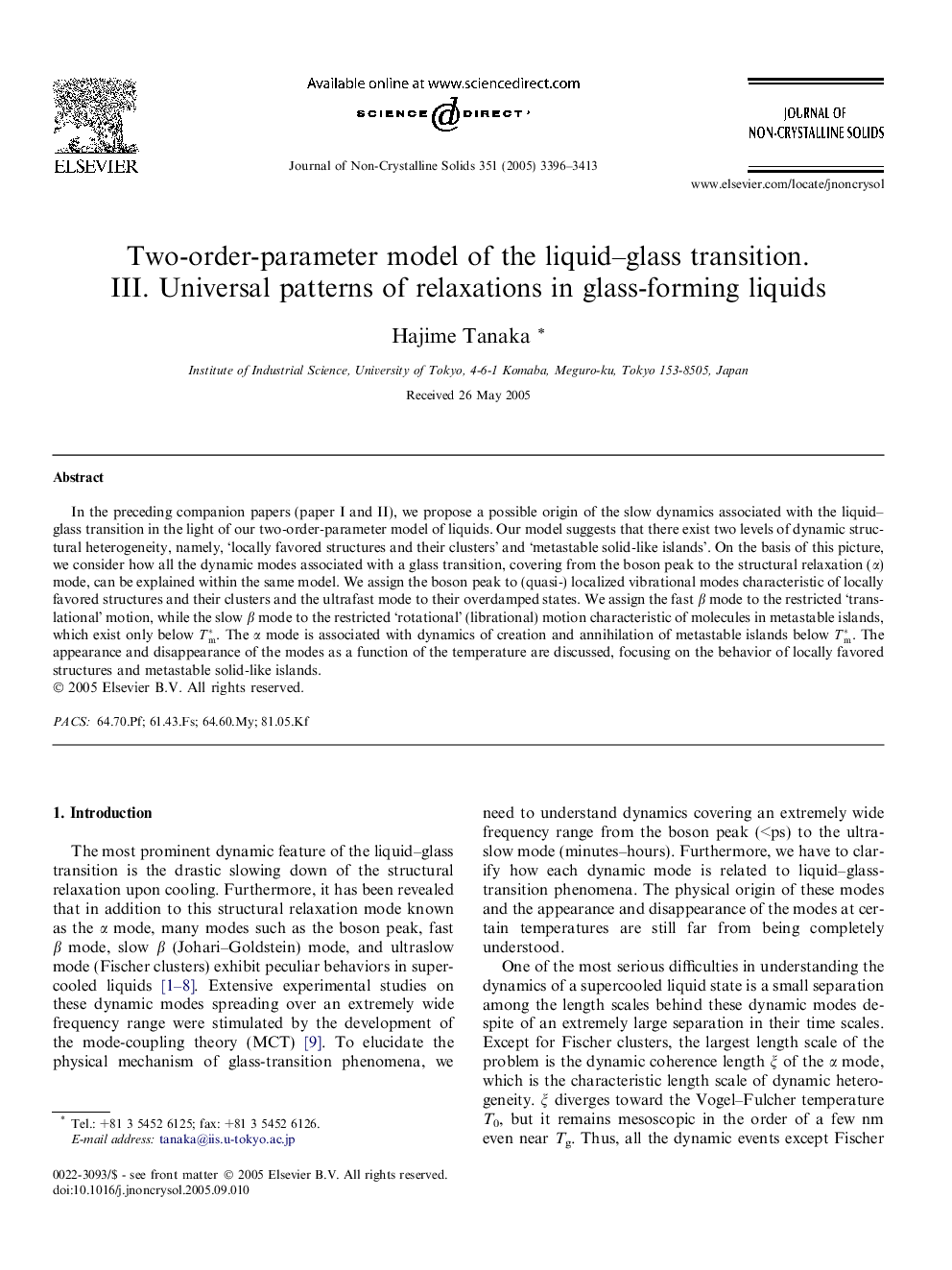| Article ID | Journal | Published Year | Pages | File Type |
|---|---|---|---|---|
| 1486620 | Journal of Non-Crystalline Solids | 2005 | 18 Pages |
In the preceding companion papers (paper I and II), we propose a possible origin of the slow dynamics associated with the liquid–glass transition in the light of our two-order-parameter model of liquids. Our model suggests that there exist two levels of dynamic structural heterogeneity, namely, ‘locally favored structures and their clusters’ and ‘metastable solid-like islands’. On the basis of this picture, we consider how all the dynamic modes associated with a glass transition, covering from the boson peak to the structural relaxation (α) mode, can be explained within the same model. We assign the boson peak to (quasi-) localized vibrational modes characteristic of locally favored structures and their clusters and the ultrafast mode to their overdamped states. We assign the fast β mode to the restricted ‘translational’ motion, while the slow β mode to the restricted ‘rotational’ (librational) motion characteristic of molecules in metastable islands, which exist only below Tm∗. The α mode is associated with dynamics of creation and annihilation of metastable islands below Tm∗. The appearance and disappearance of the modes as a function of the temperature are discussed, focusing on the behavior of locally favored structures and metastable solid-like islands.
